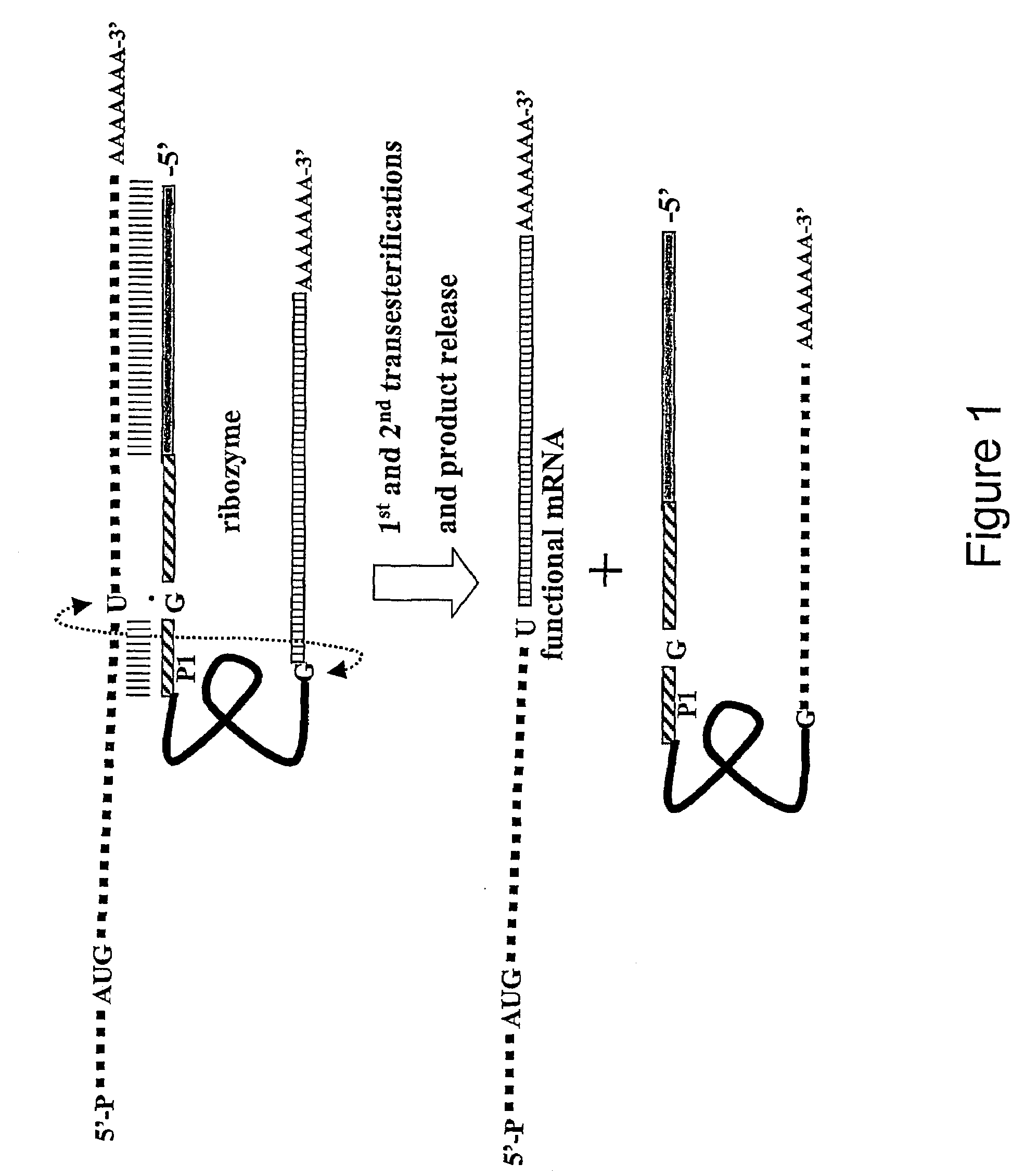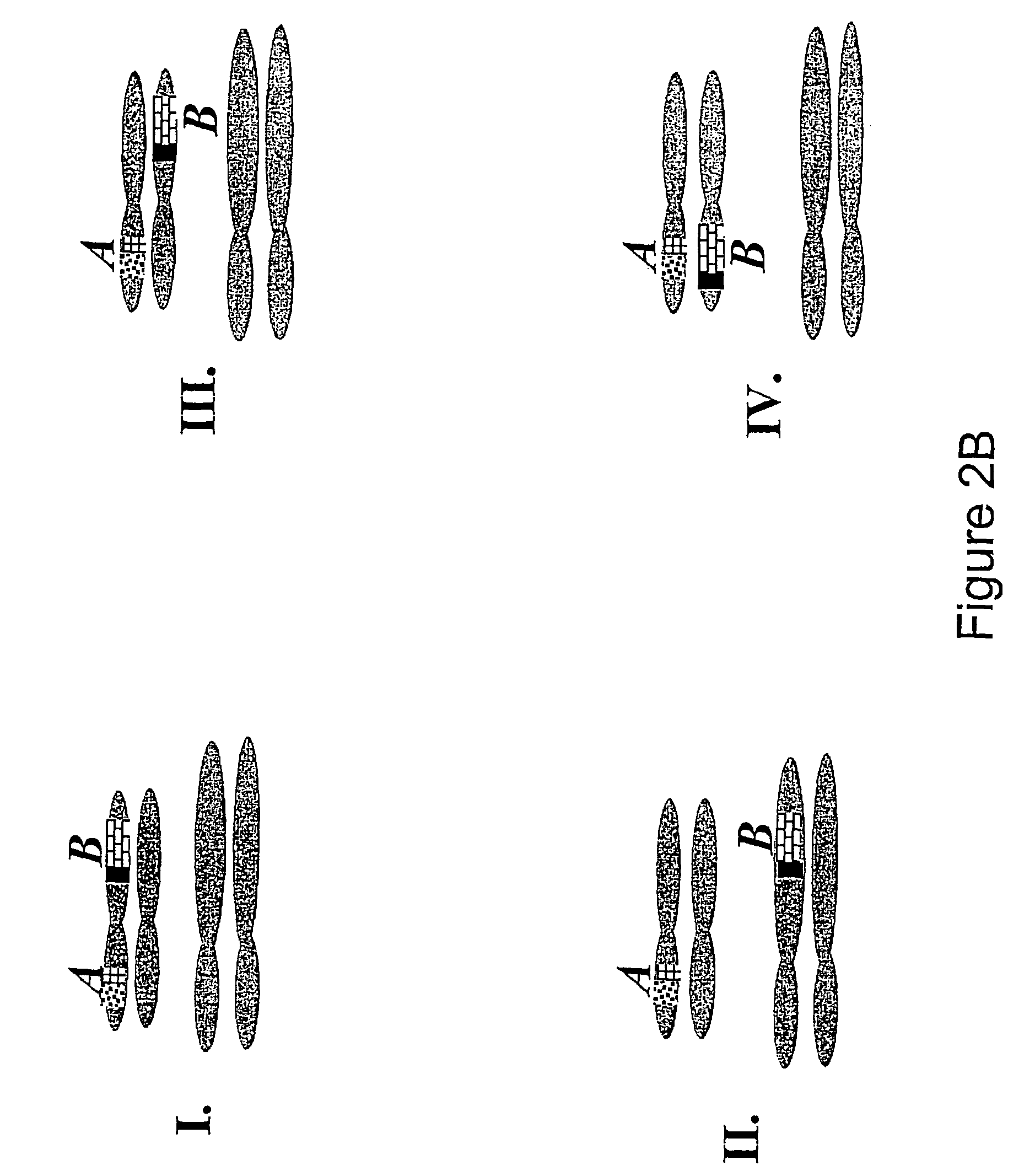Process of producing environmentally safe transgenic organisms
a technology of transgenic organisms and process, applied in the field of process of producing environmentally safe transgenic organisms, can solve the problems of inability to ignore producers, affecting the quality of transgenic organisms,
- Summary
- Abstract
- Description
- Claims
- Application Information
AI Technical Summary
Benefits of technology
Problems solved by technology
Method used
Image
Examples
example 1
Construct Design for Trans-Splicing-Mediated BAR and CryIIIA Transcript Assembly
[0081]Two T-DNA constructs (see FIG. 5), one with ribozyme linked to 3′ end of BAR gene (Gene Bank Accession X17220) and 5′ end of CryIIIA gene (Gene Bank Accession X70979) and another—with 5′ end of BAR gene and ribozyme linked with 3′ end of CryIIIA gene, were designed using standard molecular biology techniques (Sambrook, Fritsch & Maniatis, 1989, Molecular Cloning: A Laboratory Manual, Cold Spring Harbor Lab Press, Plainview, N.Y., 2nd edition). The first construct (FIG. 5, top) carries the 5′ end of a 35S promoter-driven transcriptional unit containing a CryIIIA gene linked to a 200 b.p. fragment of HPT gene in sense orientation and a nos promoter-driven transcriptional unit containing 300 b.p. HPT gene fragment in anti-sense orientation followed by a ribozyme linked to 3′end of BAR gene. The second construct (FIG. 5, second from the top) has a 35S promoter-driven 200 b.p HPT gene fragment in anti-s...
example 2
Detection of Trans-splicing Events in Transformed Plant Cells
[0107]The T-DNA of constructs shown in FIG. 5, were co-introduced in Arabidopsis thaliana (Col-0) plants as descried by Bent et al., (1994, Science, 285, 1856-1860). Seeds were harvested three weeks after vacuum-infiltration germinated and screened for transformants, by spraying several times with 50 mg / L of phosphinothricin (PPT) solution.
[0108]The same constructs were also used for Agrobacterium-mediated leaf disc cotransformation of Nicotiana plants (Horsh et al., 1985, Science, 227, 1229-1231) using 10 mg / L of PPT.
[0109]The transgenic plants showing resistance to PPT, shall harbor two different T-DNAs, carrying the different parts of BAR gene. No PPT resistant plants were recovered by using only one of two constructs. This suggests that CryIIIA also shall be present in the cell, as its parts are linked with BAR gene fragments.
[0110]Southern analysis was performed to select transgenics with single copy of each T-DNA.
[01...
PUM
| Property | Measurement | Unit |
|---|---|---|
| frequency | aaaaa | aaaaa |
| herbicide resistance | aaaaa | aaaaa |
| insect resistance | aaaaa | aaaaa |
Abstract
Description
Claims
Application Information
 Login to View More
Login to View More - R&D
- Intellectual Property
- Life Sciences
- Materials
- Tech Scout
- Unparalleled Data Quality
- Higher Quality Content
- 60% Fewer Hallucinations
Browse by: Latest US Patents, China's latest patents, Technical Efficacy Thesaurus, Application Domain, Technology Topic, Popular Technical Reports.
© 2025 PatSnap. All rights reserved.Legal|Privacy policy|Modern Slavery Act Transparency Statement|Sitemap|About US| Contact US: help@patsnap.com



